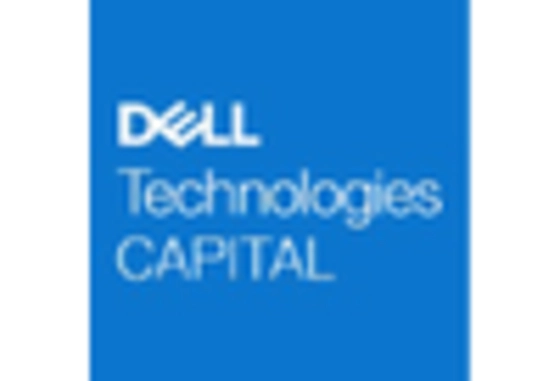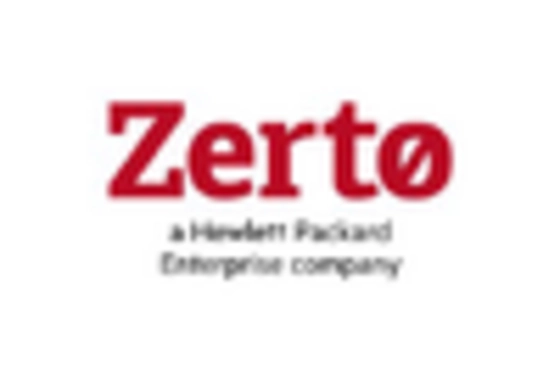Rising Cybersecurity Threats
The Disaster Recovery Solution Market is experiencing heightened demand due to the increasing frequency and sophistication of cybersecurity threats. Organizations are recognizing the necessity of robust disaster recovery solutions to safeguard their data and maintain operational continuity. In 2025, it is estimated that cyberattacks could cost businesses trillions of dollars, prompting a proactive approach to disaster recovery. Companies are investing in comprehensive solutions that not only address data recovery but also enhance their overall security posture. This trend indicates a shift towards integrated disaster recovery strategies that encompass both recovery and prevention, thereby driving growth in the Disaster Recovery Solution Market.
Regulatory Compliance Pressures
The Disaster Recovery Solution Market is significantly influenced by the growing pressures of regulatory compliance across various sectors. Organizations are mandated to adhere to stringent regulations regarding data protection and recovery, which has led to an increased investment in disaster recovery solutions. In 2025, it is anticipated that compliance-related expenditures will exceed billions of dollars, as companies strive to avoid hefty fines and reputational damage. This regulatory landscape compels businesses to implement comprehensive disaster recovery strategies that not only meet compliance requirements but also enhance their resilience. Consequently, the demand for tailored disaster recovery solutions is expected to rise, further driving the growth of the Disaster Recovery Solution Market.
Growing Data Volume and Complexity
As organizations generate and store unprecedented volumes of data, the Disaster Recovery Solution Market is witnessing a surge in demand for effective data management and recovery solutions. The complexity of data environments, including hybrid and multi-cloud architectures, necessitates sophisticated disaster recovery strategies. In 2025, the global data sphere is projected to reach 175 zettabytes, underscoring the critical need for reliable disaster recovery solutions. Companies are increasingly seeking solutions that can efficiently manage this data complexity while ensuring rapid recovery times. This trend highlights the importance of innovative disaster recovery solutions that can adapt to evolving data landscapes, thereby propelling growth in the Disaster Recovery Solution Market.
Advancements in Technology and Innovation
Technological advancements are playing a pivotal role in shaping the Disaster Recovery Solution Market. Innovations such as artificial intelligence, machine learning, and automation are enhancing the efficiency and effectiveness of disaster recovery solutions. In 2025, it is expected that the integration of these technologies will streamline recovery processes, reduce downtime, and improve overall system resilience. Organizations are increasingly adopting cutting-edge solutions that leverage these advancements to optimize their disaster recovery strategies. This technological evolution is likely to drive significant growth in the Disaster Recovery Solution Market, as businesses seek to stay ahead in an ever-evolving landscape.
Increased Focus on Business Continuity Planning
The Disaster Recovery Solution Market is benefiting from an intensified focus on business continuity planning among organizations. As businesses recognize the critical importance of maintaining operations during disruptions, there is a growing emphasis on developing robust disaster recovery strategies. In 2025, it is projected that nearly 70% of organizations will prioritize business continuity planning, leading to increased investments in disaster recovery solutions. This trend reflects a broader understanding of the interconnectedness of disaster recovery and overall business resilience. Companies are seeking solutions that not only facilitate data recovery but also ensure seamless operational continuity, thereby propelling the growth of the Disaster Recovery Solution Market.


















Leave a Comment